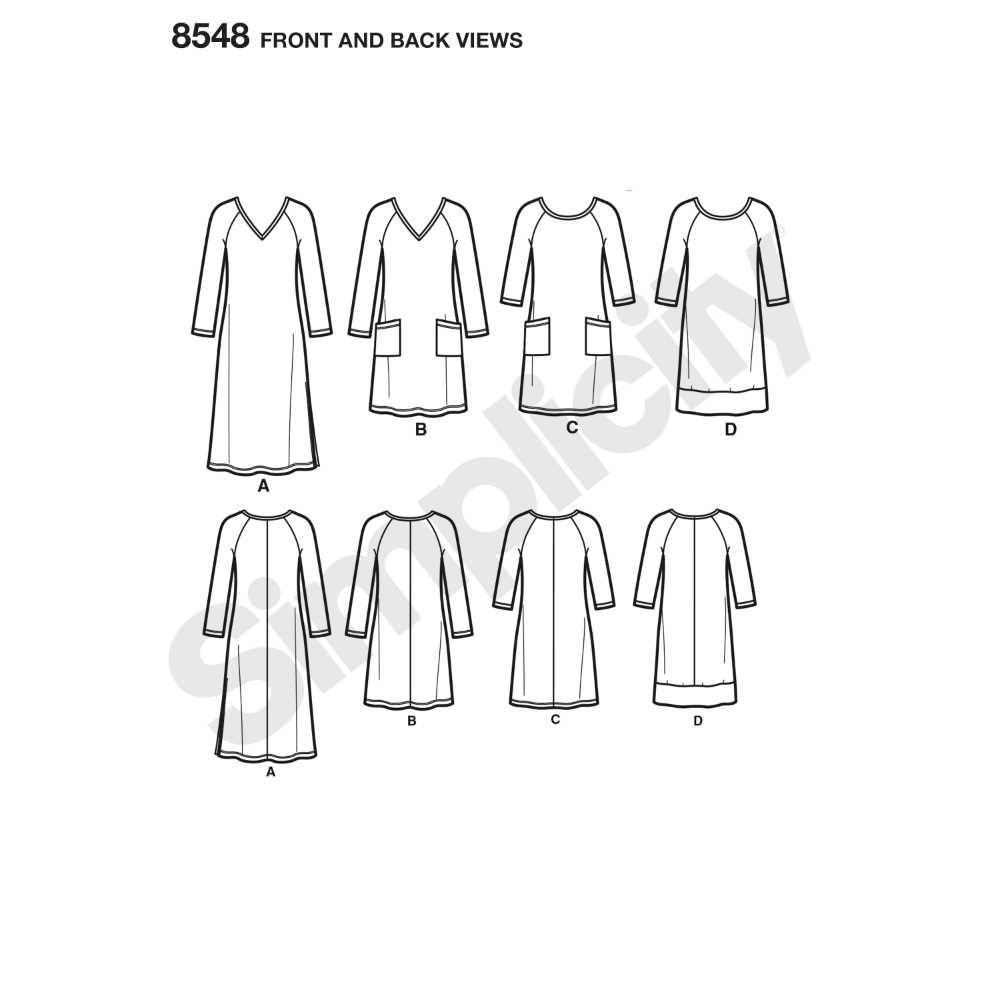
Stretch knit dresses are casual and comfortable garments that are perfect for everyday wear or special occasions. Made from stretchy fabric, these dresses are easy to put on and move around in, making them a popular choice among women of all ages and body types.
Whether you’re a beginner or an experienced seamstress, sewing your own stretch knit dress can be a rewarding and enjoyable project. With the right sewing patterns and techniques, you can create a dress that fits you perfectly and flatters your figure.
There are numerous stretch knit dress sewing patterns available online and in stores, ranging from simple and classic styles to more complex and trendy designs. These patterns come with detailed instructions and measurements, making it easy for you to customize the dress to your desired length, neckline, and sleeve style.
When choosing a stretch knit dress sewing pattern, consider factors such as the level of difficulty, the amount of fabric required, and your personal style preferences. Additionally, look for patterns that offer options for different sizes and body shapes, as well as variations such as empire waistlines, wrap fronts, and gathered skirts.
Why Stretch Knit Dresses are Popular Among Sewing Enthusiasts
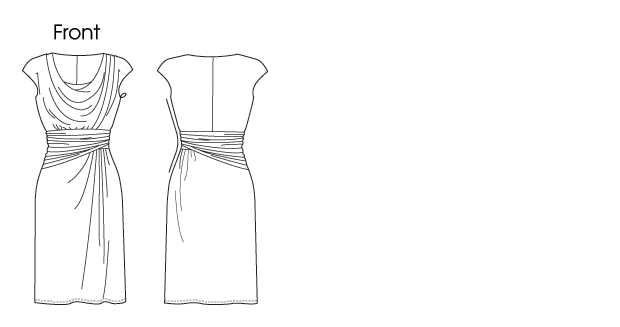
Stretch knit dresses have gained immense popularity among sewing enthusiasts due to their versatility, comfort, and flattering fit. The stretchy nature of knit fabrics makes them an excellent choice for creating dresses that hug the body in all the right places. Whether it’s a form-fitting sheath dress or a flowy maxi dress, stretch knit fabrics allow for ease of movement and provide a comfortable wearing experience.
One of the main reasons why sewing enthusiasts love working with stretch knit fabrics is the forgiving nature of these materials. Unlike woven fabrics, which may require precise fitting and extensive alterations, stretch knits are more forgiving when it comes to fit. They have natural elasticity that allows the dress to stretch and conform to the wearer’s body shape, reducing the need for complex pattern adjustments or multiple fitting sessions. This makes stretch knit dresses an accessible and beginner-friendly option for those who are new to sewing.
Moreover, stretch knit dresses are known for their versatility. They can be dressed up or down, making them suitable for various occasions. From casual day-wear to elegant evening attire, stretch knit dresses can be easily customized and tailored to meet individual style preferences. The flexibility of knit fabrics allows sewing enthusiasts to experiment with different designs, necklines, sleeve lengths, and embellishments, creating unique and personalized garments.
Additionally, stretch knit fabrics are wrinkle-resistant and easy to care for, making them ideal for travel and everyday wear. They can be packed without worrying about creases and can be machine-washed and dried, eliminating the need for delicate handwashing or expensive dry cleaning. This convenience adds to the appeal of stretch knit dresses for sewing enthusiasts who appreciate both style and practicality.
In conclusion, stretch knit dresses have gained popularity among sewing enthusiasts for their versatility, comfort, forgiving fit, and easy care. These dresses allow for creative experimentation, customization, and ensure a flattering silhouette. With their stylish and practical attributes, it’s no surprise that stretch knit dresses have become a staple in many sewers’ wardrobes.
Benefits of Sewing with Stretch Knit Fabrics
Stretch knit fabrics are a versatile option for sewing projects, particularly for creating comfortable and form-fitting garments like dresses. These fabrics offer several benefits that make them an excellent choice for sewists of all levels.
1. Stretch and Comfort
One of the primary advantages of working with stretch knit fabrics is their inherent stretchiness. Unlike woven fabrics, which typically have limited or no stretch, knits can stretch in multiple directions, allowing for greater comfort and ease of movement when wearing the finished garment. This makes stretch knit dresses perfect for everyday wear, as they can conform to your body without feeling restrictive.
2. Versatility
Another benefit of sewing with stretch knit fabrics is their versatility. These fabrics come in a wide range of weights, textures, and patterns, allowing you to create various looks and styles. Whether you prefer a sleek and fitted silhouette or a flowy and relaxed design, there is a stretch knit fabric suitable for your project. Additionally, stretch knit fabrics are great for creating both casual and formal dresses, making them a versatile choice for any occasion.
3. Easy to Sew
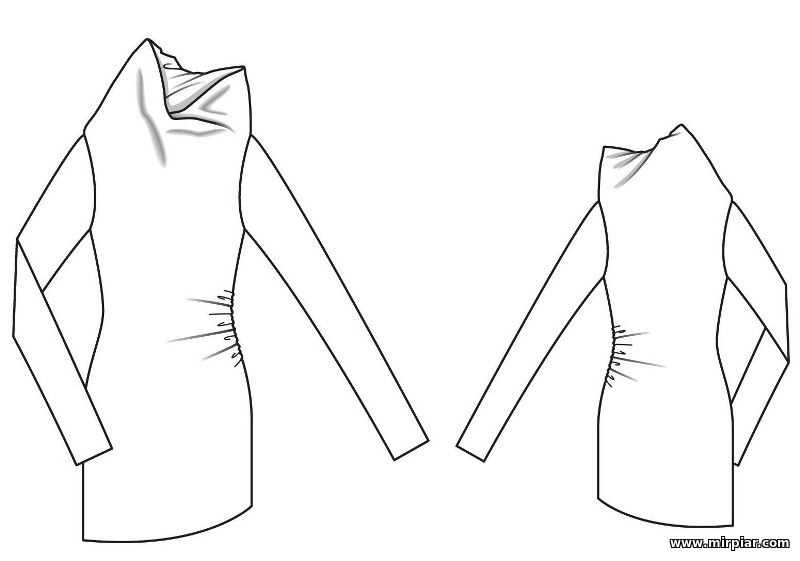
Sewing with stretch knit fabrics can be easier compared to working with woven fabrics because knits are more forgiving when it comes to mistakes and fitting adjustments. The stretchiness of the fabric can help you achieve a better fit, as it allows the garment to stretch and adjust to your body shape. Additionally, knit fabrics don’t fray like woven fabrics, eliminating the need for finishing seams. This makes sewing with stretch knit fabrics a quick and efficient process.
4. Durable and Resilient
Stretch knit fabrics are known for their durability and resilience. They can withstand frequent wearing and washing without losing their shape or becoming stretched out. This makes them suitable for creating long-lasting dresses that can be worn and enjoyed for years to come. Additionally, stretch knit fabrics often have good recovery, meaning they can bounce back to their original shape after stretching, maintaining the integrity of the garment over time.
5. Easy Care
Stretch knit fabrics are generally easy to care for, which adds to their appeal. Many knit fabrics are machine washable and can be dried in the dryer, making them convenient for everyday use. They also tend to be wrinkle-resistant, which means less time spent on ironing and maintenance. This makes stretch knit dresses a practical choice for those with busy lifestyles.
In conclusion, sewing with stretch knit fabrics offers numerous benefits such as stretch and comfort, versatility, ease of sewing, durability, and easy care. These fabrics are an excellent choice for creating stylish and comfortable dresses that can be enjoyed for a long time. So, whether you’re a beginner or an experienced sewist, consider incorporating stretch knits into your next dressmaking project.
Choosing the Right Stretch Knit Dress Sewing Pattern
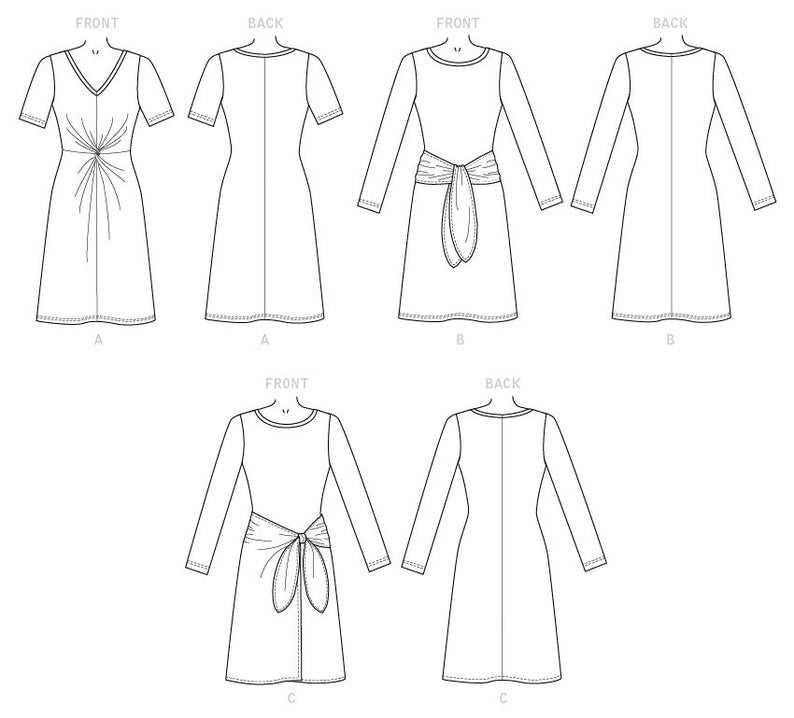
When it comes to sewing stretch knit dresses, choosing the right sewing pattern is essential. A well-fitted pattern will ensure that the final dress not only looks good but also feels comfortable to wear. Here are some key factors to consider when selecting a stretch knit dress sewing pattern:
1. Fabric Compatibility
One of the most important factors to consider is the compatibility of the pattern with the fabric you plan to use. Stretch knits come in various weights and stretch percentages, so it’s important to choose a pattern that is designed for the type of fabric you have. Look for patterns specifically designed for stretch knits or with a stretch allowance on the pattern envelope.
2. Style and Design
The style and design of the dress pattern should also align with your preferences and body type. Consider the neckline, sleeve length, and overall silhouette of the dress. Look for patterns that flatter your figure and suit your personal style. Additionally, consider whether the pattern includes any design details such as pockets, ruffles, or pleats that you may want to incorporate into your dress.
3. Sizing and Fit
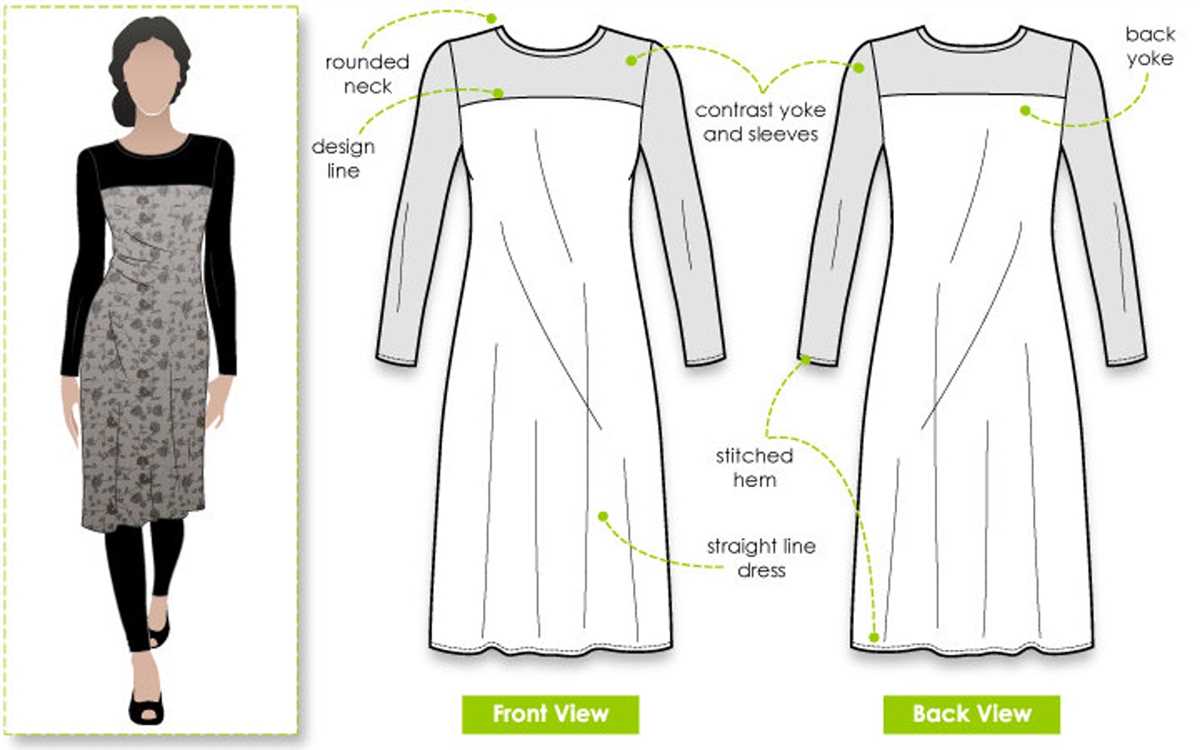
Sizing and fit are crucial when it comes to stretch knit dresses. Look for patterns that offer multiple size options and consider taking accurate measurements of your body before choosing a size. Additionally, some patterns may include different cup sizes or options for petite or tall figures, so be sure to check for these variations if they apply to you. It’s always a good idea to make a mock-up or toile using inexpensive fabric before cutting into your final fabric.
4. Construction and Instructions
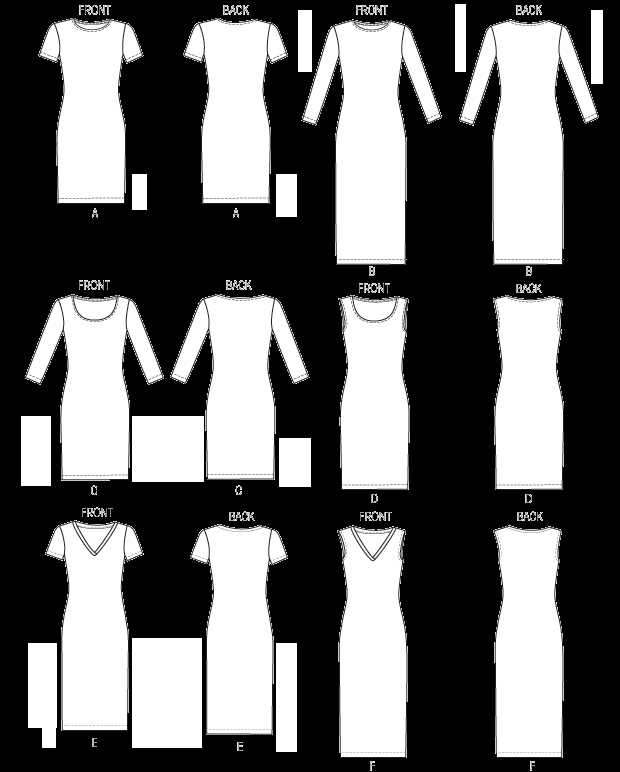
Finally, consider the construction of the dress and the instructions provided in the pattern. Some patterns may be more beginner-friendly with detailed step-by-step instructions and illustrations, while others may assume a certain level of sewing knowledge. Additionally, consider whether you prefer patterns that are printed on paper or available in a digital format. Choose a pattern that aligns with your skill level and preferred method of working.
- Consider the fabric compatibility, style and design, sizing and fit, and construction and instructions when choosing a stretch knit dress sewing pattern.
- Look for patterns designed specifically for stretch knits or with a stretch allowance.
- Choose a style and design that flatters your figure and suits your personal style.
- Ensure the pattern offers multiple size options and consider any variations for different body types.
- Consider the construction and instructions provided in the pattern, as well as your preferred format of the pattern.
Understanding the Different Types of Stretch Knit Fabrics
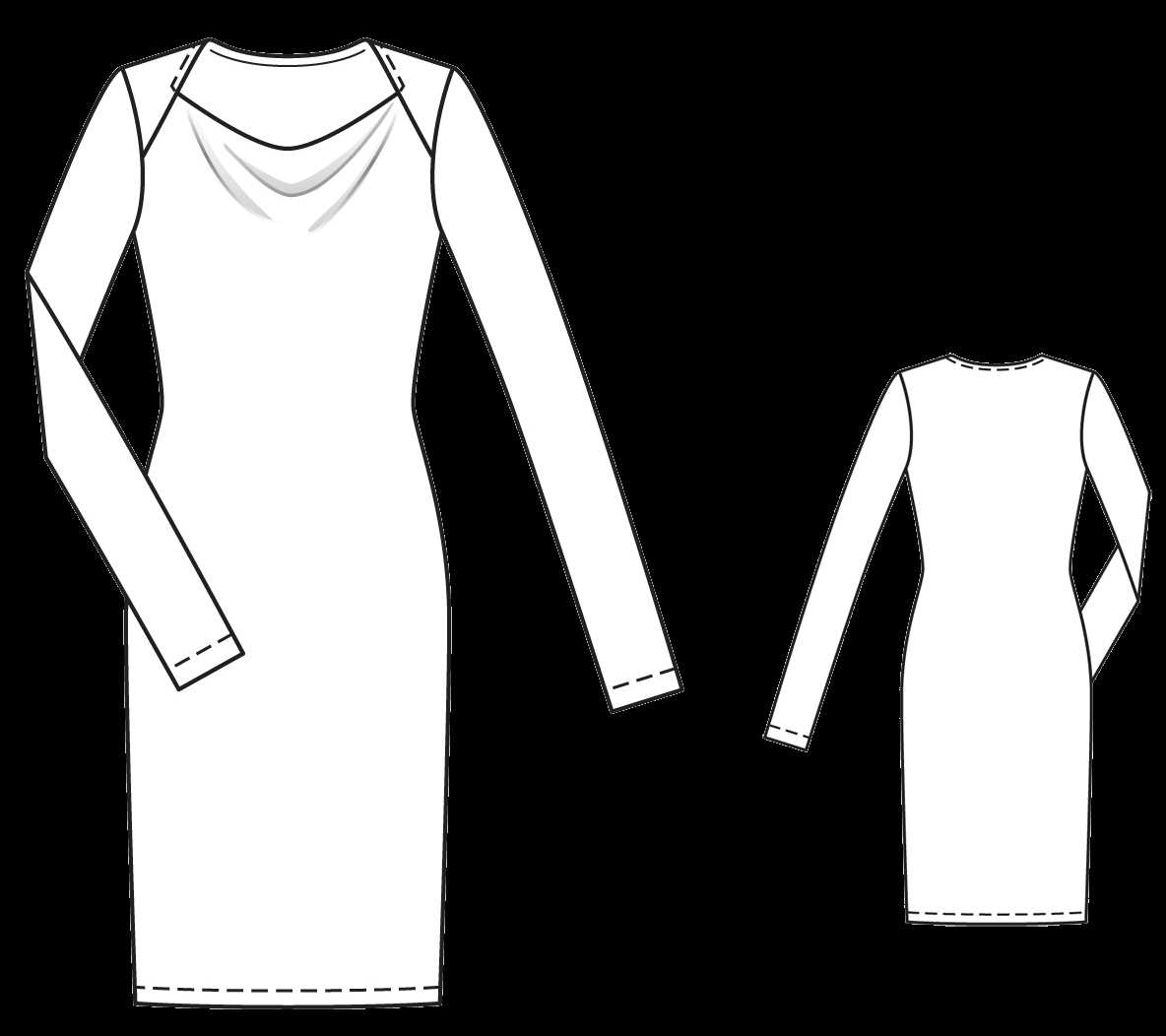
When it comes to sewing stretch knit dresses, it is important to understand the different types of fabrics available. Stretch knit fabrics are known for their ability to stretch and recover, making them ideal for garments that require movement and comfort. Here are a few of the most common types of stretch knit fabrics:
1. Jersey Knit
Jersey knit is perhaps the most popular and widely used stretch knit fabric. It is lightweight, smooth, and has a great drape, making it perfect for creating flowy and feminine dresses. It usually features a single knit construction, making it easy to work with and sew. Jersey knit can be made from a variety of fibers, including cotton, polyester, and rayon.
2. Ponte Knit
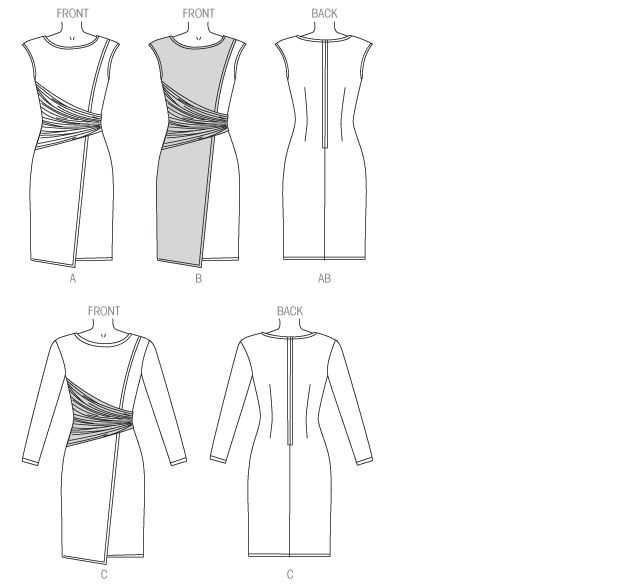
Ponte knit is a heavier and more stable knit fabric that is often used for structured garments. It is thicker than jersey knit and has a slight stretch. Ponte knit is known for its excellent shape retention and wrinkle resistance, making it a popular choice for bodycon or tailored dresses. It is typically made from a combination of rayon, nylon, and spandex.
3. Interlock Knit
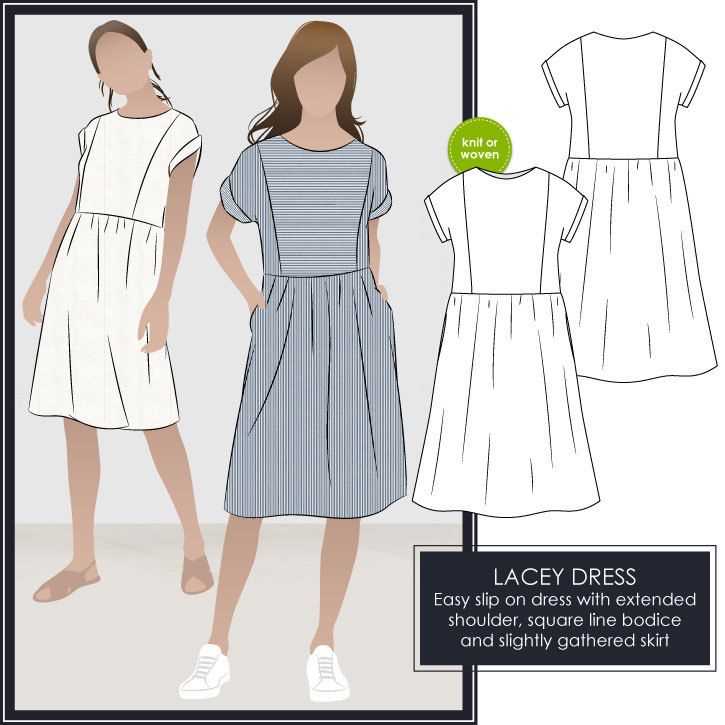
Interlock knit is a double-knit fabric that is soft, smooth, and slightly thicker than jersey knit. It has a good stretch and recovery, making it suitable for a wide range of garments, including dresses. Interlock knit has a stable structure and does not curl or roll at the edges, making it easy to work with and finish. It is usually made from a blend of cotton and polyester or cotton and spandex.
4. Rib Knit
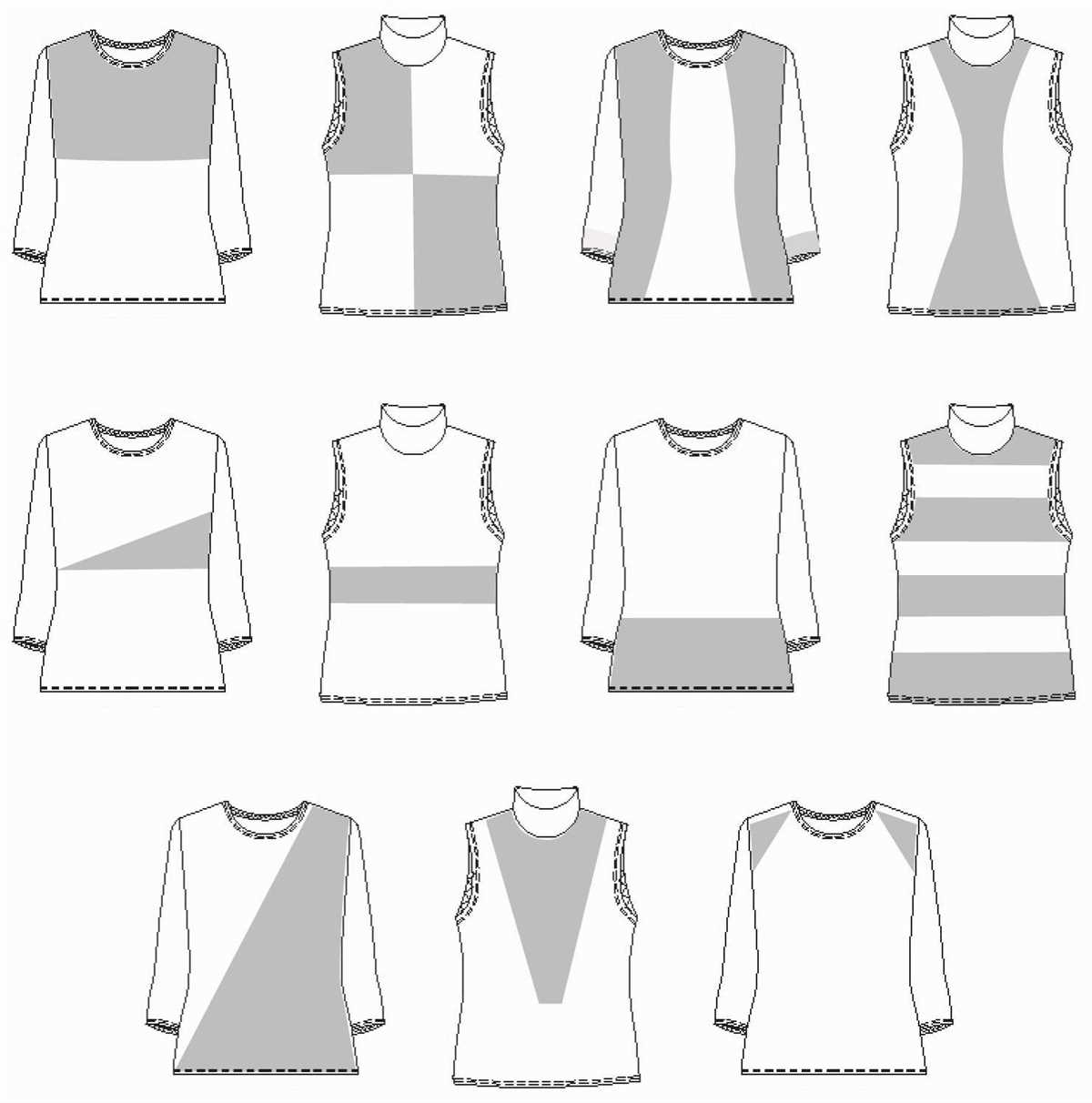
Rib knit is a textured knit fabric characterized by its raised vertical lines or ribs. It has a good stretch and recovery, allowing it to retain its shape well. Rib knit is often used for creating garments that require a close fit, such as bodycon dresses or activewear. It can be made from a variety of fibers, including cotton, rayon, and polyester.
Overall, understanding the different types of stretch knit fabrics can help you choose the right fabric for your stretch knit dress sewing project. Consider the weight, stretch, drape, and stability of the fabric to ensure it suits your desired style and comfort. Experimenting with different types of stretch knit fabrics can also lead to exciting and unique creations.
Tips for Sewing Stretch Knit Dresses
Stretch knit dresses can be comfortable and flattering to wear, but sewing with stretchy fabric can sometimes be challenging. Here are a few tips to help you successfully sew stretch knit dresses:
- Choose the right sewing machine needle: When sewing stretch knits, it’s important to use a ballpoint or stretch needle. These needles have a rounded tip that glides between the fibers of the fabric without piercing them, reducing the risk of snags or tears.
- Use a stretch stitch: Most sewing machines have a stretch stitch setting that is specifically designed for sewing stretchy fabrics. This stitch has a bit of give, allowing the fabric to stretch without breaking the stitches. If your machine doesn’t have a stretch stitch setting, you can also use a narrow zigzag stitch.
- Test your stitches: Before sewing your actual dress, it’s always a good idea to test your stitches on a scrap piece of fabric. This will help you determine the best tension and stitch length for your specific fabric. You can also test how much stretch the fabric has and adjust your stitch accordingly.
- Use a stretchy interfacing: When adding interfacing to areas like collars or cuffs, it’s best to use a stretchy interfacing that will allow the fabric to maintain its stretch and drape. Fusible tricot interfacing or knit interfacing are good options for stretch knit dresses.
- Finishing the edges: To prevent the edges of your stretch knit dress from curling or stretching out, it’s recommended to finish them with a serger or overlock stitch. If you don’t have a serger, you can use a zigzag stitch or a double needle to finish the edges.
By following these tips, you’ll be able to sew stretch knit dresses with ease, creating comfortable and stylish garments that you’ll love to wear. Don’t be afraid to experiment and try different techniques to find what works best for you and the specific fabric you’re working with.
Common Mistakes to Avoid When Working with Stretch Knits
Working with stretch knits can be a bit intimidating for beginners, but with the right techniques and knowledge, it can be a rewarding experience. However, there are some common mistakes that many people make when working with stretch knits that can lead to less-than-desirable results. Here are a few mistakes to avoid when sewing stretch knit dresses:
Not choosing the right fabric
One of the most important aspects of sewing with stretch knits is choosing the right fabric. Not all stretch knits are created equal, and using the wrong type of fabric can result in garments that don’t fit properly or don’t have the desired drape. It’s crucial to choose a fabric with the right amount of stretch and recovery for your project.
Using the wrong needle and stitch
When sewing with stretch knits, it’s essential to use the correct needle and stitch to prevent skipped stitches and fabric puckering. Using a ballpoint needle, which is designed to go between the fibers of knit fabrics rather than piercing them, can help prevent snags and runs. Additionally, using a stretch stitch or a small zigzag stitch can provide the necessary flexibility for the fabric.
Skipping the pre-wash
Stretch knits are prone to shrinkage, so it’s crucial to pre-wash and pre-shrink your fabric before starting your project. Skipping this step can result in garments that no longer fit properly after the first wash. Follow the care instructions provided by the fabric manufacturer to ensure the best results.
Not using stabilizers
Stretch knits can be quite stretchy, which can make them challenging to sew. Using stabilizers, such as clear elastic or stay tape, can help prevent the fabric from stretching out of shape and ensure that your seams and hems stay secure. Additionally, using a walking foot or a twin needle can help with even feeding of the fabric and prevent stretching as you sew.
Not using the right tension and presser foot pressure
Adjusting the tension and presser foot pressure on your sewing machine is crucial when working with stretch knits. Using the wrong settings can cause the fabric to stretch out or gather, resulting in uneven seams and hems. Experiment with different tension settings and presser foot pressure until you achieve a balanced stitch that lays flat and doesn’t pucker.
Avoiding these common mistakes when working with stretch knits can help ensure that your finished dress fits well and looks professional. Take the time to learn the proper techniques and invest in the right tools to make your sewing experience with stretch knits more enjoyable and successful.
How to Adjust a Stretch Knit Dress Pattern for a Perfect Fit
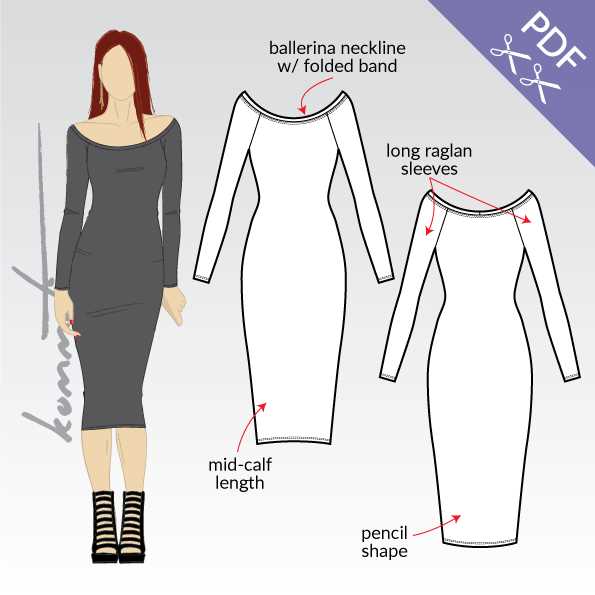
When sewing a stretch knit dress, it’s important to adjust the pattern to ensure a perfect fit. Stretch knit fabric has the ability to stretch and conform to your body, so getting the fit just right is crucial. Here are some tips to help you adjust your stretch knit dress pattern for a perfect fit.
1. Take accurate measurements
Before starting any adjustments, it’s essential to take accurate measurements of your body. Measure your bust, waist, and hips, as well as the length from your shoulder to waist and waist to hem. Having precise measurements will help you determine which areas of the pattern need adjusting.
2. Make a muslin
To ensure an accurate fit, it’s always a good idea to make a muslin, or a test garment, first. Use a cheap fabric that has similar stretch properties to your final fabric. Sew the dress according to the pattern instructions, but baste the seams instead of using a regular stitch. This will allow you to make any necessary adjustments before cutting into your final fabric.
3. Adjust the pattern

Based on your measurements and how the muslin fits, you can now make the necessary adjustments to the pattern. Common adjustments for stretch knit dresses include taking in the side seams for a slimmer fit, adding length to accommodate a longer torso, or adjusting the neckline for a better fit around the shoulders. It’s important to make small adjustments and try them out on the muslin before finalizing the changes.
4. Consider fabric properties
When adjusting the pattern, it’s important to consider the properties of the fabric you’ll be using. Different stretch knit fabrics have varying amounts of stretch and recovery. If your fabric has less stretch than the muslin, you may need to make additional adjustments to the pattern to ensure a comfortable fit.
5. Test the fit
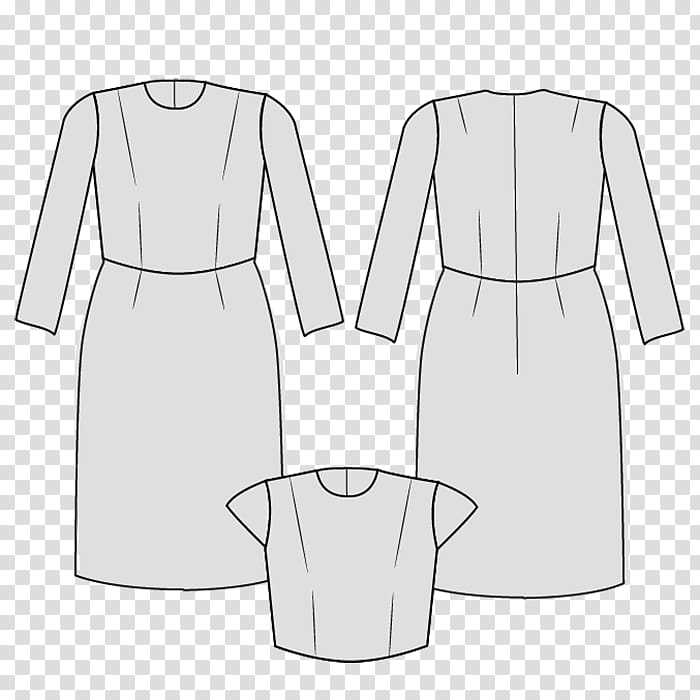
Once you’ve made the necessary adjustments to the pattern, sew another test garment using your final fabric. This will allow you to test the fit and make any final tweaks before sewing the dress for real. Remember to baste the seams initially, as this will make it easier to make any last-minute adjustments if needed.
By following these steps and taking your time to adjust the pattern, you can achieve a perfect fit for your stretch knit dress. Remember to take accurate measurements, make a muslin, adjust the pattern accordingly, consider fabric properties, and test the fit before sewing the final garment. With a little patience and attention to detail, you’ll have a dress that fits you like a glove!
Adding Stylish Details to Your Stretch Knit Dresses
Stretch knit dresses are a versatile and comfortable addition to any wardrobe. They can be worn casually or dressed up for more formal occasions. To make your stretch knit dresses stand out, consider adding stylish details that will elevate your look.
1. Ruching: Ruching is an excellent way to add texture and visual interest to your stretch knit dresses. It involves gathering the fabric in a flattering way, creating beautiful drapes and folds. You can add ruching to the bodice, waist, or sleeves of your dress to accentuate your curves and create a slimming effect.
2. Cut-out details: Cut-out details are a trendy and stylish addition to any dress. They can be strategically placed to show off a hint of skin in a tasteful and sophisticated way. Consider adding cut-out details to the neckline, shoulders, or back of your stretch knit dress for a bold and fashionable look.
3. Color blocking: Color blocking is a fun and creative way to add pops of color to your stretch knit dress. It involves using two or more contrasting colors to create visually striking sections or panels on your dress. Experiment with different color combinations that complement your skin tone and personal style.
4. Embellishments: Embellishments such as sequins, beads, or embroidery can add a touch of glamour and elegance to your stretch knit dress. Consider adding these details to the neckline, waistline, or hemline of your dress to create a focal point and make a statement.
5. Draped details: Draped details can add a touch of sophistication and femininity to your stretch knit dress. Opt for asymmetrical drapes or cascading ruffles to create movement and visual interest. These details can be added to the sleeves, skirt, or neckline of your dress to create a unique and fashionable look.
By adding these stylish details to your stretch knit dresses, you can elevate your look and make a statement. Whether you’re attending a special occasion or simply want to add some flair to your everyday wardrobe, these details will help you stand out with style.
Creating Professional Finishes for Stretch Knit Dresses
When sewing stretch knit dresses, it’s important to pay attention to the finishes to achieve a professional look. The elasticity of the fabric requires specific techniques to ensure that the garments are not only comfortable to wear but also have a polished appearance.
Hemming: One common finish for the bottom hem of stretch knit dresses is a double needle hem. This technique creates a neat and stretchy edge that prevents the fabric from unraveling. To achieve this finish, use a double needle and a stretch stitch setting on your sewing machine. Fold the hem up, towards the wrong side of the fabric, and stitch along the edge using the double needle. This will create two parallel lines of stitching on the right side of the dress and a zigzag stitch on the wrong side.
Necklines and Armholes: To finish the necklines and armholes of stretch knit dresses, a binding technique is often used. Cut strips of fabric, usually in a contrasting color, that are 1.5 to 2 inches wide and the length of the neckline or armhole plus a little extra for stretching. Fold the strip in half lengthwise, wrong sides together, and press to create a crease. Align the raw edges of the strip with the raw edges of the neckline or armhole, right sides together, and stitch in place. Then, flip the binding to the inside of the dress and topstitch along the edge to secure it in place. This technique not only gives a professional finish but also adds a decorative touch to the dress.
Seams: Since stretch knit fabric is known for its elasticity, it’s important to use the right stitch when sewing the seams. The most common stitch for stretch knit dresses is a stretch stitch or a narrow zigzag stitch. This allows the seam to stretch with the fabric without breaking. It’s also important to finish the seam allowances to prevent fraying. An overlock stitch or a serger can be used to finish the raw edges, or a simple zigzag stitch along the edge can also do the job.
Finishing touches: To add a professional touch to stretch knit dresses, consider adding details such as topstitching, decorative trims, or appliques. Topstitching can be done along the seams or around the neckline and armholes to add structure and durability. Decorative trims, such as lace or ribbons, can be used to embellish the dress and give it a personalized touch. Appliques, whether made from fabric or other materials, can be used to create unique designs and add visual interest to the garment.
In conclusion, creating professional finishes for stretch knit dresses requires attention to detail and specific techniques. Hemming with a double needle, using binding for necklines and armholes, choosing the right stitch for the seams, and adding finishing touches are all essential steps to achieve a polished look. With these techniques, your stretch knit dresses will not only be comfortable to wear but also stand out as beautifully made garments.
Exploring Styling Options for Stretch Knit Dresses
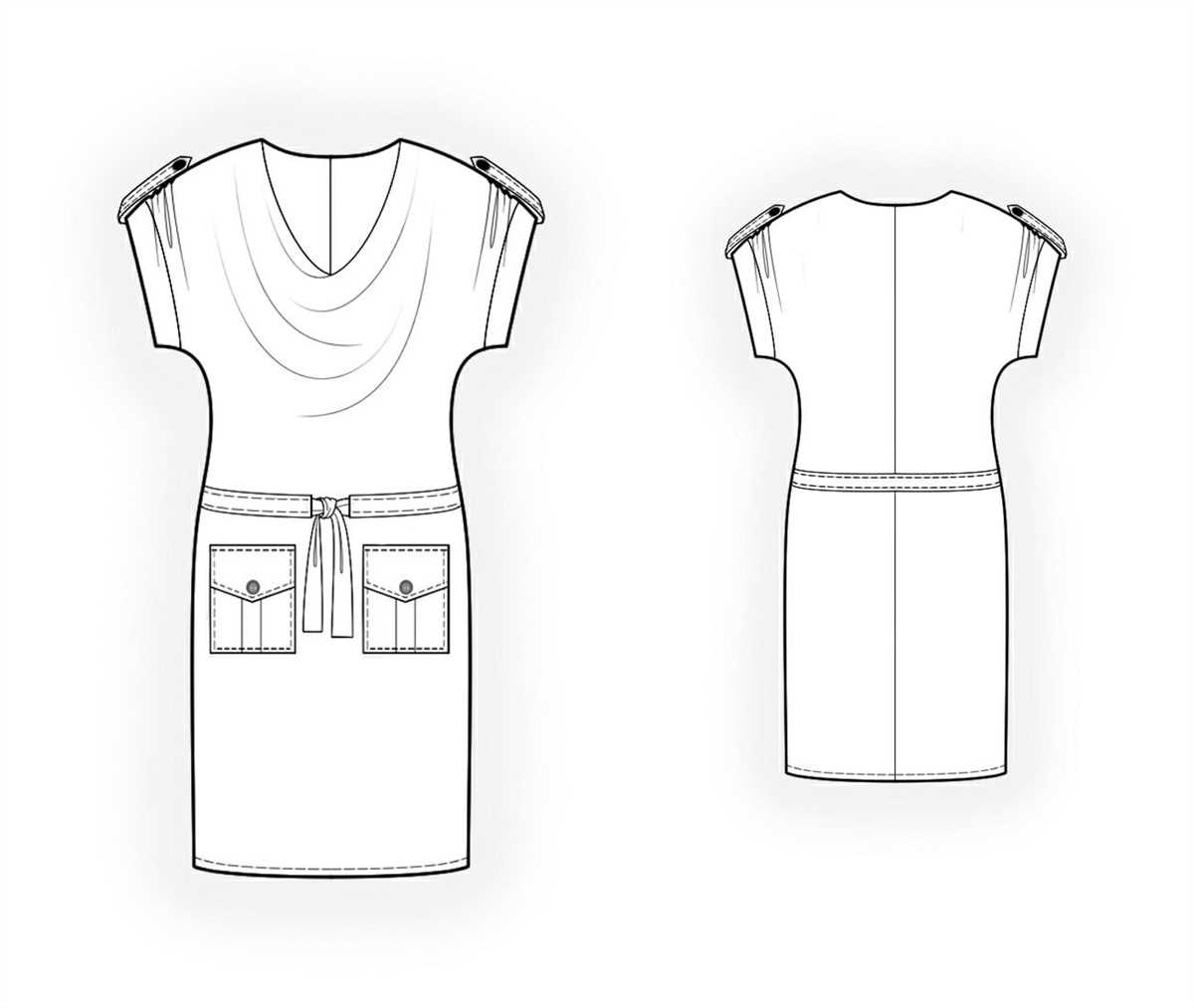
Stretch knit dresses are versatile and comfortable garments that can be worn for a variety of occasions. Whether you’re going for a casual everyday look or a dressed-up evening ensemble, there are plenty of styling options to consider when working with stretch knit fabrics.
Accessorize for a Polished Look: One way to elevate a stretch knit dress is to accessorize with statement pieces. Adding a bold belt or a chunky necklace can instantly transform a simple dress into a stylish outfit. Consider experimenting with different accessories to find the perfect combination that complements your dress and personal style.
Layer Up for a Trendy Ensemble: Another option for styling stretch knit dresses is layering. By adding a jacket, cardigan, or blazer, you can create a layered look that adds depth and interest to your outfit. Additionally, layering can be practical for transitioning between different weather conditions, allowing you to easily adapt your dress to changing temperatures.
Experiment with Different Silhouettes: Stretch knit fabrics are known for their ability to mold to the body, allowing for a close and flattering fit. However, this doesn’t mean that all stretch knit dresses have to be form-fitting. Experimenting with different silhouettes, such as A-line or wrap dresses, can offer an alternative look that adds variety to your wardrobe.
- Wrap dresses: Wrap dresses are a classic choice that accentuate the waist and create a feminine silhouette. They are flattering on many body types and can be styled up or down depending on the occasion.
- A-line dresses: A-line dresses flare out from the waist, creating a more relaxed and forgiving fit. This silhouette is great for those who want a looser, more comfortable option while still looking stylish.
Play with Prints and Patterns: Stretch knit fabrics come in a variety of designs, prints, and patterns. By choosing a dress with a unique print or pattern, you can make a bold fashion statement. Whether it’s floral, geometric, or abstract, the right print can add visual interest and make your dress stand out.
Overall, stretch knit dresses offer endless opportunities for stylish and comfortable outfits. By accessorizing, layering, experimenting with different silhouettes, and playing with prints, you can create a variety of looks that suit your personal style and make you feel confident and beautiful.
Troubleshooting Common Issues When Sewing Stretch Knit Dresses
Sewing stretch knit dresses can be a rewarding project, but it can also come with its fair share of challenges. From fabric sliding around to stretched-out seams, there are several common issues that can arise when working with stretch knits. By understanding how to troubleshoot these problems, you can ensure that your finished dress has a professional and polished look.
1. Fabric Sliding: One common issue when sewing stretch knit dresses is that the fabric tends to slide around while being stitched. This can lead to uneven seams and misaligned pattern pieces. To avoid this problem, it is important to stabilize the fabric before sewing. One method is to use a spray adhesive to temporarily bond the fabric to a piece of tissue paper. This will help to keep the fabric in place while stitching.
2. Stretchy Necklines: Another common issue is when the neckline of the dress stretches out after sewing, resulting in a saggy or ill-fitting look. To prevent this, it is crucial to stabilize the neckline before sewing. This can be achieved by using strips of clear elastic or knit stay tape. Sewing these stabilizing materials along the neckline will help to maintain its shape and prevent stretching.
3. Stretching Seams: Stretch knit fabrics tend to have a lot of stretch and can easily cause seams to stretch out over time. To avoid this, it is important to use the correct type of stitch when sewing stretch knit dresses. A stretch stitch or a narrow zigzag stitch is recommended as they allow the seams to stretch with the fabric. Additionally, reinforcing the seams with a second row of stitching or using a serger can also help prevent stretching.
4. Hemming Difficulties: Hemming stretch knit dresses can be tricky since the fabric tends to curl up and resist laying flat. One solution to this problem is to use a twin needle or a coverstitch machine. These tools create a professional-looking double row of stitching that allows the fabric to stretch while maintaining a clean finish. Alternatively, using a narrow zigzag stitch or a stretch stitch along the hem can also help to prevent curling.
5. Misaligned Seams: It is not uncommon for seams to become misaligned when sewing stretch knit dresses, especially when working with multiple pattern pieces. To avoid this issue, it is important to pin or baste the seams together before stitching. This will help to ensure that the seams align properly and result in a well-finished garment.
Sewing stretch knit dresses can be challenging, but with the right troubleshooting techniques, you can overcome common problems and achieve beautiful results. By stabilizing the fabric, using the correct stitches, and taking the time to properly align seams, you can create stretch knit dresses that are both comfortable and stylish.
Find Inspiration for Your Next Stretch Knit Dress Project
If you’re feeling inspired to sew your own stretch knit dress, there are plenty of resources available to help you find the perfect pattern and design. Whether you’re a beginner or an experienced sewist, these sources can provide you with ideas and inspiration for your next project.
One great way to find inspiration is to look at sewing patterns specifically designed for stretch knit dresses. Many pattern companies offer a wide variety of options, from simple sheath dresses to more complex designs with interesting details. Some popular pattern companies include Vogue, Simplicity, and McCalls. These patterns often come with instructions and helpful tips, making them suitable for sewists of all skill levels.
Online sewing communities and blogs
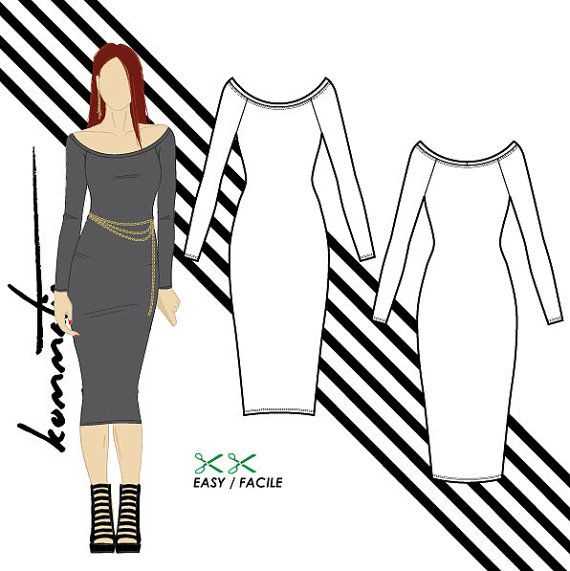
Another valuable resource for inspiration is online sewing communities and blogs. Communities like Sewing Pattern Review and BurdaStyle allow sewists to share their projects, discuss patterns, and offer tips and tricks. These communities often have forums dedicated to specific types of garments, including stretch knit dresses. Blogs written by experienced sewists can also be a great source of inspiration, as they often share photos of their finished projects and describe their sewing process.
Fashion magazines and websites
If you’re looking for style inspiration, fashion magazines and websites are a great place to start. Look for photos of stretch knit dresses in current fashion trends to get ideas for your own project. Pay attention to the colors, silhouettes, and details that catch your eye. You can also explore fashion websites that feature runway shows or street style photography to see how designers and fashionistas are styling their stretch knit dresses.
Fabric stores and online retailers
Lastly, don’t forget to visit your local fabric store or browse online retailers for fabric and pattern inspiration. Fabric stores often have displays or samples of garments made with different types of fabrics, including stretch knits. This can give you a better idea of how a certain fabric will drape and stretch when made into a dress. Online retailers often provide customer reviews and photos, which can be helpful in visualizing the fabric for your project.
No matter where you find your inspiration, the most important thing is to choose a pattern and design that you love. Sewing your own stretch knit dress allows you to create a garment that fits your body and personal style perfectly. With the right resources and inspiration, your next stretch knit dress project is sure to be a success!